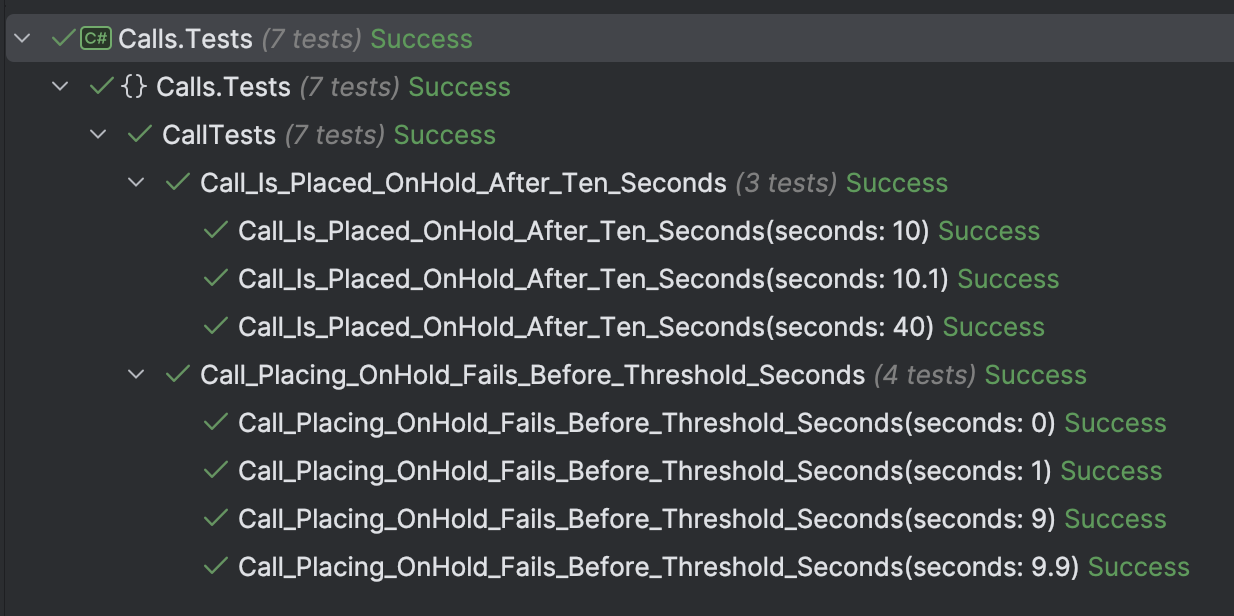Using State Machines In .NET - Part 7 - Conditional State Transitions
[C#, .NET, Stateless, StarLibrary]
This is Part 7 of a series on using State Machines to express complex logic.
- Using State Machines In .NET - Part 1 - Introduction
- Using State Machines In .NET - Part 2 - Basic Usage
- Using State Machines In .NET - Part 3 - Setting Initial State
- Using State Machines In .NET - Part 4 - Using Multiple Triggers
- Using State Machines In .NET - Part 5 - Using Complex & Nested States
- Using State Machines In .NET - Part 6 - Firing Events On State Change
- Using State Machines In .NET - Part 7 - Conditional State Transitions (This Post)
- Using State Machines In .NET - Part 8 - Firing Events Before State Change
- Using State Machines In .NET - Part 9 - Calling Asynchronous Methods
- Using State Machines In .NET - Part 10 - Generating State Diagrams
- Using State Machines In .NET - Part 11 - Logic Based On How A State Was Transitioned
- Using State Machines In .NET - Part 12 - State Activation & Entry
In our last post, we examined how to use events to express the logic we want whenever the state changes.
In this post, we will examine situations in which state changes are permissible only when certain conditions are met.
Assume some sort of call center is using this code, and we want the following:
- All calls duration must be recorded
- Being on hold does not stop timing.
- A call can only be placed on hold after 10 seconds, to avoid situations where a caller is immediately placed on hold.
To implement this logic, we update our Call class as follows:
public sealed class Call
{
// State machine
private readonly StateMachine<Status, Trigger> _stateMachine;
// Store our start time for tracking
private DateTime _startTime;
// Constant for minimum threshold
private const int MinimumTimeBeforeHoldInSeconds = 10;
public Status CurrentStatus => _stateMachine.State;
public Call(TimeProvider timeProvider) : this(Status.Ready, timeProvider)
{
}
private Call(Status status, TimeProvider timeProvider)
{
var provider = timeProvider;
_stateMachine = new StateMachine<Status, Trigger>(status);
//
// Configure state machine
//
_stateMachine.Configure(Status.Ready)
.Permit(Trigger.Dial, Status.Ringing);
_stateMachine.Configure(Status.Ringing)
.Permit(Trigger.PickUp, Status.Connected)
.Permit(Trigger.HangUp, Status.Ready)
.OnEntry(() => Log.Information("Ringing..."));
// Only allow transition of the time since start time is greater than or
// equal to the threshold (10 seconds). This is by capturing the current time
// at the point of requested state change and comparing with the start time
_stateMachine.Configure(Status.Connected)
.PermitIf(Trigger.Hold, Status.OnHold,
() => (timeProvider.GetUtcNow().DateTime - _startTime).TotalSeconds >= MinimumTimeBeforeHoldInSeconds)
.Permit(Trigger.HangUp, Status.Ready)
.OnEntry(() =>
{
Log.Information("Connected...");
// Set the start time
_startTime = provider.GetUtcNow().DateTime;
});
_stateMachine.Configure(Status.OnHold)
.PermitIf(Trigger.UnHold, Status.Connected)
.PermitIf(Trigger.HangUp, Status.Ready)
.OnEntry(() => Log.Information("Placing On Hold..."));
_stateMachine.Configure(Status.Ready)
.OnEntry(() => Log.Information("Hanging Up..."));
}
public void Dial()
{
_stateMachine.Fire(Trigger.Dial);
}
public void HangUp()
{
_stateMachine.Fire(Trigger.HangUp);
}
public void PickUp()
{
_stateMachine.Fire(Trigger.PickUp);
}
public void Hold()
{
_stateMachine.Fire(Trigger.Hold);
}
public void UnHold()
{
_stateMachine.Fire(Trigger.UnHold);
}
}
The logic here is once the Call is connected, we capture the start time.
Then when a user tries to place the Call OnHold, we compare that time to the start time.
Some tests to verify this logic:
[Theory]
[InlineData(10.0)]
[InlineData(10.1)]
[InlineData(40)]
public void Call_Is_Placed_OnHold_After_Ten_Seconds(decimal seconds)
{
var provider = new FakeTimeProvider();
provider.SetUtcNow(DateTime.UtcNow);
var call = new Call(provider);
call.Dial();
_output.Output.Should().EndWith("Ringing...\n");
call.PickUp();
_output.Output.Should().EndWith("Connected...\n");
// Advance the time by 10 seconds
provider.Advance(TimeSpan.FromSeconds((double)seconds));
var ex = Record.Exception(() => call.Hold());
ex.Should().BeNull();
// Check status is on hold
call.CurrentStatus.Should().Be(Status.OnHold);
}
[Theory]
[InlineData(9.0)]
[InlineData(9.9)]
[InlineData(0)]
[InlineData(1)]
public void Call_Placing_OnHold_Fails_Before_Threshold_Seconds(decimal seconds)
{
var provider = new FakeTimeProvider();
provider.SetUtcNow(DateTime.UtcNow);
var call = new Call(provider);
call.Dial();
_output.Output.Should().EndWith("Ringing...\n");
call.PickUp();
_output.Output.Should().EndWith("Connected...\n");
// Advance the time by 9 seconds
provider.Advance(TimeSpan.FromSeconds((double)seconds));
var ex = Record.Exception(() => call.Hold());
ex.Should().BeOfType<InvalidOperationException>();
}
These tests should pass:

TLDR
Transitions between states can be controlled by conditions using the PermitIf() method during configuration.
The code is in my GitHub.
Happy hacking!